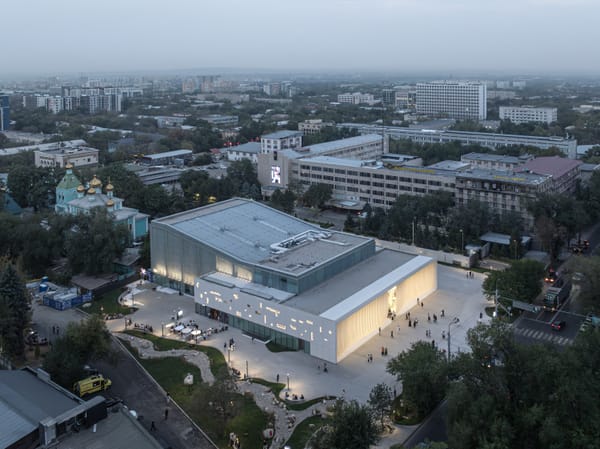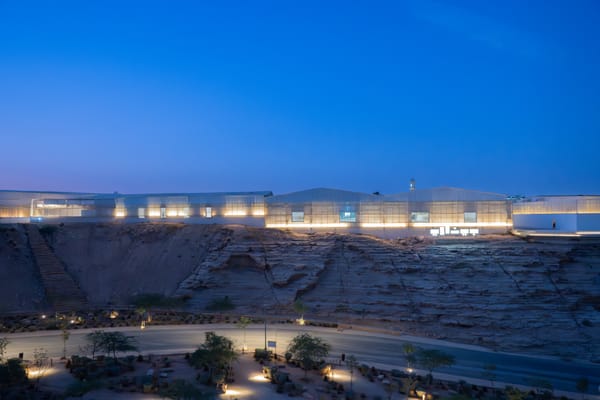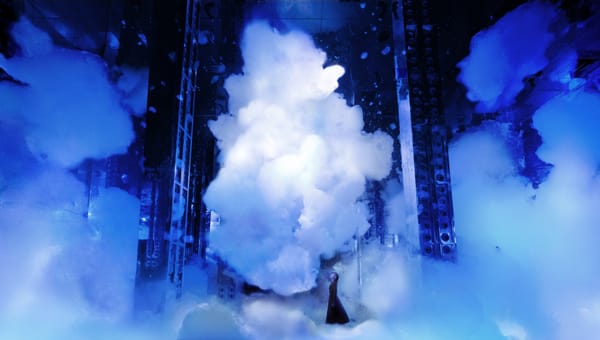People
Material Matters: Interview with Lotus Laurie Kang
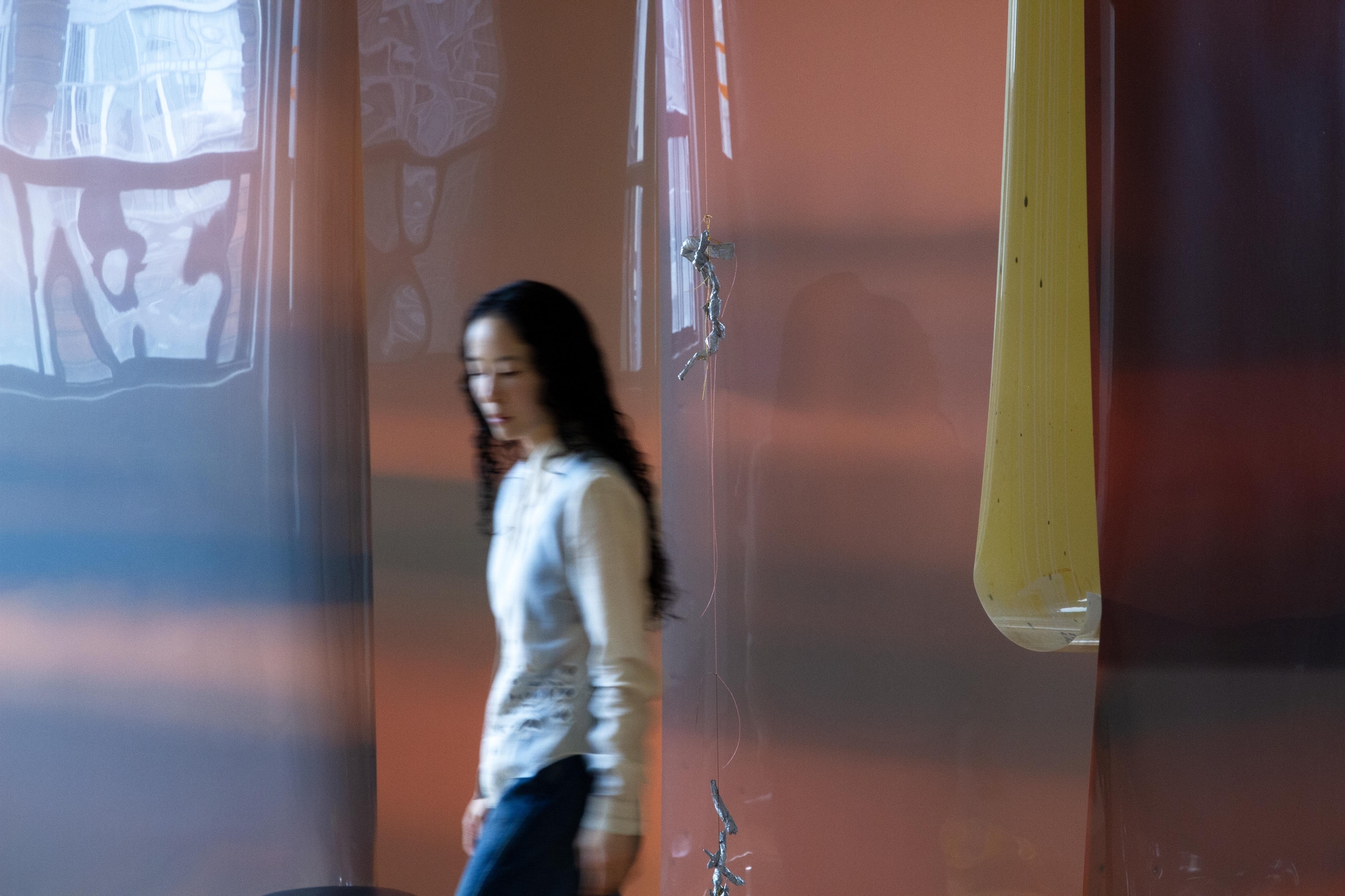

From photographic film “skins” and the void to Buddhist thought and family memories, there are many facets to artist Lotus Laurie Kang’s practice. But at the heart of it is a deep engagement with the body in all its forms and materiality. Kang’s identity as an identical twin has influenced the use of reflections and doubles in her practice, as well as her interrogation of the spaces between binaries.
Opening on June 2, “In Cascades” (2023), Kang’s first solo institutional exhibition in Europe, was unveiled as a sprawling, site-responsive commission at Chisenhale Gallery in London. There, sun-drenched sheets of light-sensitive, unfixed photographic film—which the artist terms “skins”—were suspended from a steel joist structure, their bodies changing color as they breathe in light and humidity from their surroundings. Other beings, in the form of vegetal and food matter cast in aluminum, such as Regurgitation (2023) and Knot (2023), and the colored glass forms resembling baby rats, Sticky Pups I–IV (2023), drift about in this curious ecosystem—to be discovered by or left hidden from the eyes of visitors.
In recent years, Kang has participated in the 2021 New Museum Triennial, “Soft Water Hard Stone,” in New York, and in 2022 she was the inaugural resident of the Horizon Art Foundation in Los Angeles. Her site-sensitive commission Molt (New York–Lethbridge–Los Angeles–Toronto–Chicago– ) (2018–23) is the latest iteration of the Atrium Project at the Museum of Contemporary Art, Chicago, and is on view until February 2024.
Recently, Kang was the third speaker in the Asymmetry Distinguished Lecture Series, a collaboration between Asymmetry Art Foundation and The Courtauld Institute of Art which brings together influential guest speakers to present lectures, participate in talks, and chair panels on Chinese and Asian contemporary art. During the talk, Kang discussed issues of care, belonging, matter, and memory in her practice, responding to the series’ call to rethink intimacy.
I sat down with Kang to discuss her recent moves in London.

During your talk, “Porous Beings,” at The Courtauld, which was held ahead of the opening of “In Cascades,” you wove together various strands of thought from biology, speculative fiction, and cultural theory. How essential is theory and theoretical research to your artistic practice?
I see it as a nourishing process. I don’t directly create work based on theory. Instead, I absorb it and find inspiration in certain key phrases and passages, which I transcribe and revisit as a catalyst for further exploration. The resulting work is never about the theory itself, but rather an embodiment of the source. I consider this process as one of “regurgitation”: what’s left after metabolizing the theory is something more formless.
Your site-specific interventions have made the white cube space of Chisenhale Gallery seem “strange” and “unhomely.” I’m thinking of the cast aluminum lotus root, seen in Lotus (2023), stuck between a crack in the doorway or the swathes of photographic film in various states of exposure hanging from a steel joist structure in the titular installation In Cascades (2023). How did you go about surveying and then responding to and remaking the space?
There’s a scaffold of steel joists which structures the main section of the installation, and its spatial footprint was mostly determined by the gallery’s own ceiling grid. I was collaborating with an architect in New York, David Andrew Tasman, on the exhibition’s architecture. We went through various kinds of floor plans, though nothing was meant to be prescriptive. I was thinking of them as “ghostly architectures,” or proposing a half-finished or half-undone floor plan of sorts. Ideas that we kept in mind included working with the foundation of a traditional Korean house’s (or hanok’s) floor plan. But it was important for me not to be obedient to that—to regurgitate rather than reiterate that source. From there, the arrangement of the photographic film was decided mostly on-site, on the basis of what it feels like to move around as a body; what it feels like to encounter it; and what sight lines become available. You can’t decide through a SketchUp all the time.
I feel like the cracks you’re referring to—the lotus root in the crack threshold of the gallery’s doorway and the cast aluminum anchovies placed within the cracks of the gallery floors—are actually the most site-responsive parts of the show. I wanted to address the literal in-between spaces of the gallery, which felt like the most intimate way to touch the space. Amy Jones, the exhibition’s curator, described the floor as an informal archive of the gallery. I wanted to contribute to that archive in some way. Initially, I had the idea to drill holes into the floor and fill them with pigmented silicone. But what became more interesting over time was to work with and point to the voids that already existed, rather than create my own holes.
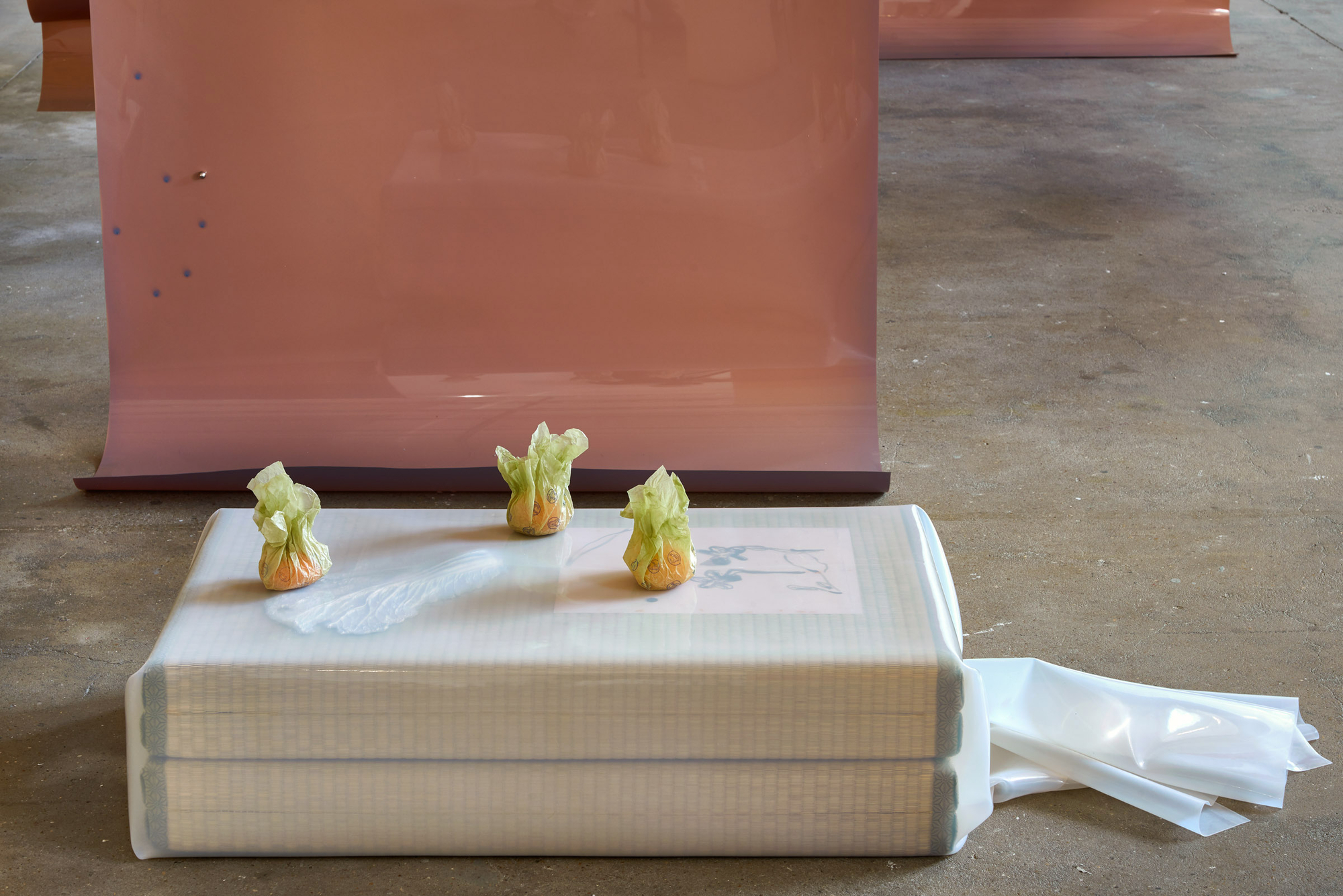
So, in a contradictory way, are you thinking about the void as a productive space of fullness?
Yes. Leading up to the install, I was reading a book that placed a spiritual emphasis on traditional Korean architecture, which is very aligned with Buddhist thinking. Spatially, it’s all about emptying space out to create form. You need formlessness to create form, or the void to see possibilities. The steel joists in In Cascades have all these circles cut out of the material—a literal lack of or negative space. The photographic film is also hung from the joist in a way that proposes both density and emptiness, and we also kept certain areas of the exhibition deliberately empty, in order to present emptiness itself as form.
The photographic film “skins” we find in In Cascades are a recurring medium in your practice. How did you go about selecting these ones? There’s a photograph online of you bending over a grouping of Polaroid-like photographs that depict different arrangements of the film in the gallery. What’s the story behind this photograph?
All the photographic film that’s being shown at Chisenhale right now comes from various locations where I’ve “tanned” it. “Tanning” is the word I use to refer to my process of exposing the film, as I think of it in relation to the body and time—to skin and flesh. There are several years’ worth of film contained within the space and leading up to “In Cascades,” I had to decide what film to bring from various studios in Los Angeles, Toronto, New York City, and a greenhouse that became an extension of my studio last summer. My process tends to be very web-like or circuitous. I don’t really know what’s happening when I’m in the midst of it. It does entail a lot of gathering and then finding ways for things to exist together or trying them out within a space.
With the help of my twin sister Hanna Hur, who’s also an artist, we created a system for cataloguing each sheet of film, including length and locations of tanning. I have three to four categories for the film. For example, the reddish color I call blood, the more brownish-purplish color is bruise, and the yellow is bile. Then I’ll note down whether there are leaks and tears. The sheets are anywhere from 8 to 14 feet long, so it’s difficult to look at them all at once. The smaller photographs were a way of being able to see everything at once, in order to decide how to layer the ”skins” and put the exhibition together.
For me, the film is akin to a body or bodily processes, as it's unfixed. It conveys the state of our existence, in that we’re also porous, permeable, both leaking and absorbing. We’re continually sensitive like the film. The film absorbs all the spaces it’s been in, like sedimentations. The image is embodied and not depictive, as these absorptions or leaks are never clearly legible or traceable.

There are these tiny rat pups nestled in the gallery which you refer to as “repellent pests, accepted kin, and human proxies in scientific contexts.” Would you say your work speak to issues of human and non-human collaboration, or multi-species entanglements?
Yes—multispecies entanglements necessitate blurred bodily borders. The pup stage of development is critical to health outcomes and I wanted to present this vulnerability as an ongoing state. They mirror the film in that sense. But the pup also implies a mother and inheritance, and their presence for a viewer often brings out both tenderness and disgust. The work’s name, Sticky Pup (2023), points to the knotted contact we have with what is often deemed “other;” I’m interested in the idea of something refusing to unstick, and of course there is a legacy of equating racialized bodies as animals. Colonial worldviews delineate these hierarchies of what is kin and worthy of life and what is other or parasitic. Rats are the reality of our sticky existence and our own extractive movements around the world (not dissimilar to Covid-19), and we can’t choose what accompanies us; we are all leaking into each other constantly and tangled in both care and volatility.
Coming full circle and going back to your talk, you introduced Fleshing Out the Ghost (2023), a set of 96 photographs documenting yourself going through a ritual performance in honor of your grandmother. What’s the story behind this and what was this ritual-performance drawing out?
The work borrows its title from Grace M. Cho’s book Haunting the Korean Diaspora (2008). I was thinking about ideas of inheritance and how time and spaces exist in the body, what is held or sedimented through time.
My grandmother fled North Korea on foot before settling in Seoul, and she eventually opened a shop for grains and seeds. I don’t know many details about her life, but I do know she apparently crossed the border when she was 38. As my own 38th birthday approached while working on this show, I remembered that the border between North and South Korea is also known as the 38th parallel, with this alignment of 38’s coming into view.
I developed this ritual-performance in my studio which I documented, where I moved between states of horizontality and verticality, lying down and standing up, for a duration of 38 minutes. The camera was on self-timer with a longer shutter speed, so my body is blurred and depicted in movement in most of the photographs. Almost all the works to be featured in “In Cascades” were around me in the studio, in varying states of process. An obsolete definition of inheritance is “possession”: to possess or have. This ritual-performance centered on inheritance but also stretched that into a state of being possessed, being inhabited or coexisting. So, the ritual-performance was also a kind of invocation: a means of summoning and working with my grandmother, without the intention of transcendence or a specific goal, or any kind of wholeness or arrival.
You eventually hid these photographs within various sculptures at your show. Why the need to make such a significant part of the exhibition invisible?
This extends to my ongoing interest in tangible and intangible, visible and invisible matter. It felt important for me to charge the sculptures with an index of this ritual performance and infuse them with this time and space as well. Materially, there exists a relationship between them. It’s not quite a time capsule, but it’s something similar to it.
Lotus Laurie Kang’s exhibition “In Cascades” was on view at Chisenhale Gallery, London, from June 2 to July 30, 2023.


